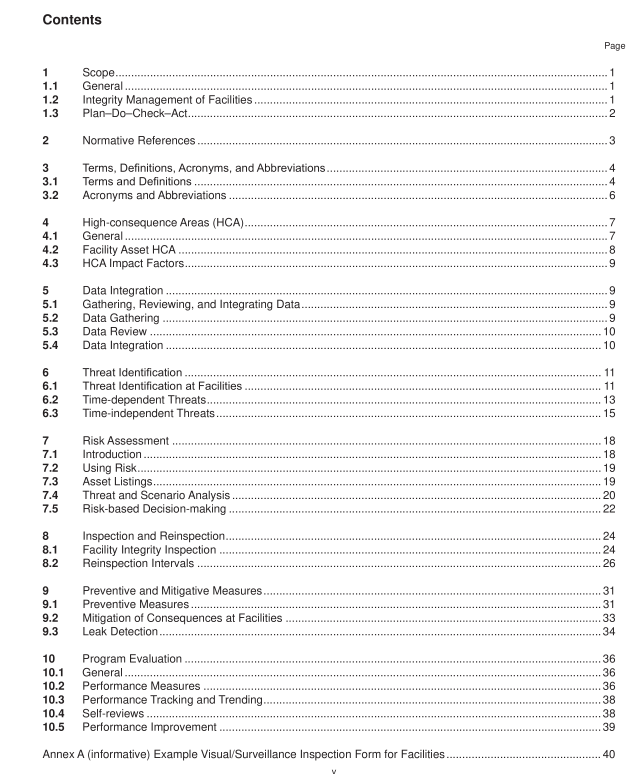API RP 1188 pdf download

API RP 1188 pdf download Hazardous Liquid Pipeline Facilities Integrity Management
Operators should specifcally consider the potential for interference at facilities because of the proximity to electrical systems that may not be isolated. For equipment that might be afected by interference, operators should ground and bond equipment, use sacrifcial anodes, or try to eliminate sources of interference, where possible.
6.2.2 Erosion and Erosion/Corrosion Areas suspected to have localized erosion or corrosion/erosion should be inspected using appropriate NDE methods that will yield wall thickness data over a wide area, such as UT, GWUT, ultrasonic scanning, radiographic profle, eddy current, or external MFL. The efect of wall thickness loss on piping integrity should be determined using industry-approved methods such as modifed B31G or RSTRENG, and piping that exhibits inadequate remaining strength should be repaired, reinforced, or replaced. NOTE See API 14E for additional guidance on susceptibility to erosion and erosion/corrosion due to high fow rates.
6.2.3 Environmental Stress Corrosion Cracking Where specifc segments of piping have a demonstrated susceptibility to environmental cracking, the operator should schedule supplemental inspections. Such inspections can take the form of NDE, penetrant testing (PT), or magnetic particle testing (MT) to identify fatigue cracking. Where feasible, suspect spools may be removed from the piping system and split open for internal surface examination. API Bulletin 939-E, Identifcation, Repair, And Mitigation Of Cracking Of Steel Equipment In Fuel Ethanol Service, provides guidelines for identifcation, mitigation, and prevention of ethanol stress corrosion cracking (SCC).
6.2.4 Manufacturing Defects Manufacturing defects at facilities can include but are not limited to equipment body defects, piping or components not meeting engineering specifcations, and seam weld defects. Quality control during procurement can prevent manufacturing defects from entering service. Inspection protocols and procedures can identify equipment and piping manufacturing defects in service and/or fatigue cracking. There are many potential sources of fatigue in a facility. Fatigue can result from pressure cycling, thermal cycling, vibration, transient operations, start/stop operations, and other sources. If crack initiation and crack growth is a concern at the facility, then analysis can be performed. Additional guidance is provided in API RP 11 76.
6.2.5 Equipment Malfunction The periodic inspection and routine maintenance of equipment with the intent of preventing equipment failures should be considered. Attention should be paid to the known mean times to failure for commonly used components, and the timely replacement of parts or units. Pipeline operators should consider replacing pressurized instrumentation lines with electrical signal devices to minimize the risk of tubing and small-bore piping failures. For example, pressure readings can be conveyed electrically from pressure transducers rather than through tubing connecting the pressurized fuid to a mechanical pressure gauge. Operators should also maintain up-to-date P&IDs. Confguration of the tubing should be designed to eliminate long runs, reduce or prevent vibration, and allow for periodic inspection. Visual inspections of the tubing and piping should be performed at regular intervals to ensure that they are properly installed and inspected per manufacturer’s recommendations.









